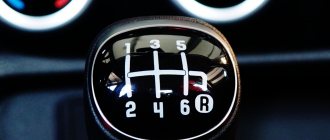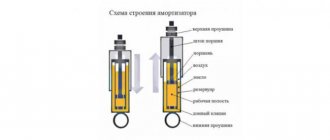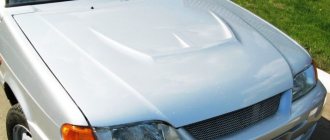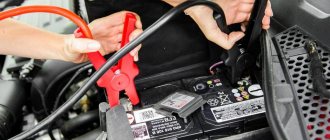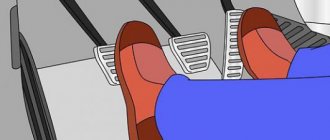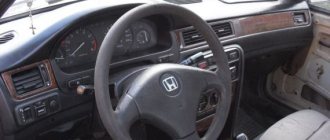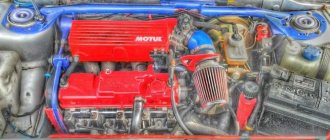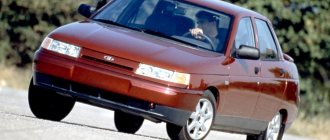Why can't you drive in neutral with a manual transmission?
Where do the roots of these disagreements come from? The fact is that in ancient times, vehicles were equipped with not very powerful engines, which overheated significantly when driving. Therefore, there was a driving style in which it was necessary to let the engine cool by reducing its speed. This was done by turning on the neutral gear.
In addition to the fact that on older engines this caused some cooling, but fuel consumption in this mode also decreased slightly. The logic here is simple. Less revolutions means less consumption. Today the situation with engine power is completely different. They are powerful and have the best cooling system.
Therefore, with a working cooling system, it is not necessary to drive in neutral to avoid overheating. Now, if the cooling does not work, then it is simply necessary to drive at a minimum speed so that the temperature does not go into the red zone. Moreover, the “heart” of a modern car is designed for a much higher number of revolutions than that of its ancestors.
Why do drivers drive in neutral?
According to the erroneous opinion of motorists, driving in neutral gear when descending a hill or approaching traffic lights significantly saves fuel consumption, thereby saving money.
In addition, it is widely believed that driving with the gear off allows you to save the components and assemblies of the vehicle.
Coasting safety
Next, it’s worth speculating about how safe it is to coast. The Rules have a definition of driving safety, which boils down to the fact that you need to drive correctly in order to avoid accidents. There are three ways to maneuver in neutral that will help avoid an accident:
- Changing the direction of movement by turning the steering wheel;
- By braking with both the service brake and the engine (by releasing the gas pedal);
- Increasing speed and pressing the gas pedal.
Why do you need neutral gear on an automatic transmission?
Why do you need neutral on an automatic transmission if you don’t turn it on when stopping at a traffic light? More than one driver asked this question. Let's try to figure out where neutral is used, why is this position necessary on an automatic transmission? And why can’t you use neutral when stopping at a traffic light, as is done with a manual transmission?
If the automatic transmission is set to neutral, the clutches disengage and the interaction between the engine and the wheels is broken. The torque converter rotates without connecting the chassis to the engine, since the friction discs are disengaged in this position.
The main task of neutral is to unlock the wheels. Neutral on an automatic transmission is used mainly when towing a car, provided that the movement should be leisurely and careful.
True, opinions differ regarding speed. Some car owners and mechanics believe that the towing speed should not exceed 30 km per hour, others call the figure 50. The length of towing a vehicle is not designed for long “walks”. Within the city to the nearest car service station. It is better to transport the car on a tow truck.
Switching the selector to neutral is also used in car repair shops when it is necessary to unlock the wheels before repairs.
Coasting on automatic
Car owners of cars with automatic transmission are often concerned with the question: is it possible to “roll down a hill” with an automatic transmission with the engine turned off? Inclined routes in vast expanses are not uncommon, and you always want to save fuel. Is it possible to switch the automatic transmission lever to the neutral position and vice versa while driving? What happens to a car if it is allowed to coast?
Read
Why do you need a handbrake on an automatic transmission and is it necessary to put a car with an automatic transmission on it?
If, while driving, you move the automatic transmission lever to position N and continue driving, the automatic transmission components will not receive oil in the required quantity, leading to a change in pressure and will be forced to rotate dry. This is harmful for rubbing units, which, subject to increased friction and heat, will quickly fail.
If you turn on mode D while the car is rolling down a hill, you can “kill” the clutch pack, since at this moment there is a strong push from the oil pump. This is especially dangerous for the torque converter, which provides transmission fluid pressure.
You should coast only with the lever in D position, with the gas pedal released. Then there is no need to change gears.
Stopping at a traffic light
Neutral is provided not only on automatic transmissions, but also on manual ones. Before we talk about why neutral is needed on an automatic transmission, let’s remember the mechanism of operation of this transmission.
Read
How to drive an automatic car correctly
When the handle is moved to position D (drive) on the automatic, the oil pump begins to pump pressure into the valve body, while the solenoid opens and provides pressure, under the influence of which the friction discs are compressed, connecting both shafts. The car is capable of moving. The driver releases the brakes and drives away.
But then the driver stops at a traffic light. If you move the lever to the neutral position N, the clutches open, the clutches close, and the shafts are separated. A few seconds pass and the driver switches gears to D again. Having driven 100-300 meters, he again encounters a traffic light. The process must be repeated. With such frequent changes in modes, the box simply cannot withstand the load and will quickly fail.
It is more correct, when meeting a traffic light, to leave the automatic transmission in driving mode, pressing the brake, and holding the pedal until the green light turns on. In mode D, the torque converter continues to build up pressure, and the gearbox components are thoroughly lubricated with transmission fluid. If you switch the gearbox to neutral while stopping, the input and output shafts will open, the pressure will drop, the oil will flow from the gearbox components, and the parts will no longer be lubricated. The next transition to movement will be stressful for the box and its components. It will be forced to restore pressure, unnecessary operations will occur, which lead to rapid wear of parts.
Read
Types of automatic transmission blockers
Likewise, when the car is stuck in a traffic jam, there is no need to change gears frequently. Maintaining D gear will allow the vehicle to maneuver better in traffic. It’s another matter if the street, as drivers say, is at a standstill, that is, there is no traffic at all. In this case, it is permissible to park the car and turn off the engine. In a long traffic jam, it is also possible to use a neutral position.
In the parking lot
There are situations when the machine has problems with the parking position. Rarely, but still. In this case, neutral on an automatic transmission with a handbrake will help out. You can park the car by moving the gearbox lever to the neutral position N. The handbrake will protect the vehicle from involuntary movement. Then, when you need to drive again, the driver will need to depress the brake pedal before starting the engine.
Acceleration is not possible
The driver can use the brakes or turn the steering wheel at any time. But to speed up (often you need to speed up to avoid an accident) will no longer work, because you need to engage the gear and press the gas pedal to the floor, and this is a waste of precious time, when not even a second, but a fraction of a second matters.
As a result, neutral gear does not allow you to use all three methods in order to avoid an accident. This may be tantamount to the fact that the car simply does not have a brake pedal or steering wheel. This way, it will probably be clearer for those drivers who want to travel as safely as possible.
Engine braking saves fuel on a descent, but not always: Video
Engine braking is a driving technique that will not only make your everyday driving safer (especially when driving downhill), but can also save you expensive fuel. Today we will answer the question, what is preferable in terms of savings? Driving downhill in neutral or in gear using engine braking? Go!
And so, it turns out that the engine braking technique when driving down a hill is much more preferable not only in terms of safety, but also in terms of fuel economy, and no matter what type of transmission your car has, automatic or manual.
2021 Subaru is tested The video looks at two everyday scenarios. The first of them (38 seconds of video) involves moving along a straight descent.
In this example of the experiment, the most effective action scheme will be engine braking. We remain in gear and, starting to move down, release the gas pedal. During engine braking, fuel injection into the cylinders will stop, and the only thing that will maintain speed at this moment is gravity and inertia, and the engine connected through the gearbox to the wheels will slow down the vehicle, preventing it from accelerating.
For those who wonder how fuel economy can occur at such moments, because the engine is running, the crankshaft is rotating, and the pistons are moving, Fenske answers that this movement occurs due to the rotation of the wheels and the above factors (vehicle mass, inertia and gravity). Also pay attention to the fuel consumption indicators, at the bottom left, between the tachometer and speedometer, when the consumption shows 99.99 MPG, it means that fuel is not entering the cylinders, this happens when the car moves into gear without pressing the accelerator pedal.
If you switch to neutral in the same scenario, the engine will go to idle and not only will the vehicle's handling be significantly reduced, but the engine will again begin to use quite a lot of fuel to maintain operation.
The second example shows us an option where using neutral may be preferable to using engine braking techniques (2.41 minutes of video).
Let's say you start at the top of a hill, but the terrain looks like this:
In hilly terrain like this, Fenske uses science and logic to first shift the gearshift to neutral, so you can accelerate to a higher speed and approach the climb with momentum built up, which will reduce the fuel consumption of the climb when you start it.
True, this type of economy only works when each subsequent rise is reduced relative to the previous one; excess speed is needed to effectively overcome the subsequent obstacle. The theory is this.
These are the theoretical calculations that Jason Fanske, an engineer specializing in mechanical engineering, told us today.
To understand how much better and preferable engine braking is, check out these materials:
Engine braking on a car, how to do it and why it's good for you
Learn to brake like a professional race car driver
How to learn to drive a manual transmission: All points, from A to Z
This is interesting: Is it possible to eliminate engine oil waste by replacing it?
How to brake correctly with manual brakes
Summarizing the above, we can say that it is safest to brake with the gear engaged. This is the so-called combined braking, which saves fuel and prevents the wheels from blocking. The latter, of course, is more relevant for older cars that are not equipped with ABS. The engaged gear also allows you to have a reserve of traction, which can be useful when accelerating or braking the engine.
It is advisable to engage neutral gear only when the car is completely stopped, while proper braking is carried out in gear until the car comes to a complete stop.
Automatic transmission modes
Before we begin to understand the essence of neutral on an automatic transmission, let’s remember what gears exist in modern automatic transmissions.
In most modern car models with an automatic transmission, there are 5 positions, marked with letters on the operating panel next to the selector lever.
- The main position of the gear selector in automatic transmission, which ensures the vehicle moves along the road, is D, or Drive;
- Parking position – P stands for Turns on when the vehicle stops;
- Neutral mode N, or Drivers nicknamed it neutral. We will talk about it in more detail below.
- Reverse gear is marked with the letter R, which means Reverse.
- OVERDRIVE transmission, marked on the panel with the letters O/D. Not available at all checkpoints. On five-speed automatic transmissions, overdrive can be turned off by simply pressing the button.
Read
Design and principle of operation of a hydromechanical gearbox
Is it possible to drive in neutral gear and why do drivers do it?
If the car has an automatic transmission, then neutral gear will not have much importance for it. However, it is different on mechanics, because there it must be used when passing each traffic light. When driving an automatic transmission, you may not even need to use this gear at all. This is absolutely accurate, but then what is it even intended for? There is no secret here; as a rule, it is required when towing. This means that if the car breaks down, it must somehow get to the service center, and this is exactly what neutral gear is designed for. However, here too it should be used with caution.
